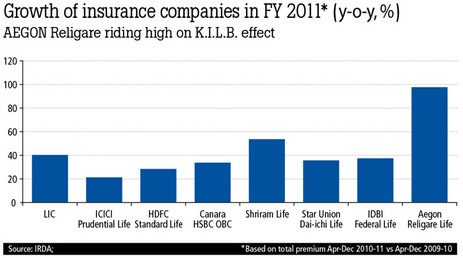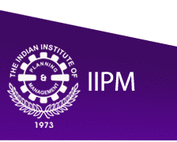Movies Now has Created Ripples in The English Movie Channel space with its HD Offering in a Fairly Short Span of Time. Can it Sustain this Iconic Rise?
 Even discounting the impact of translations, Hollywood has gained immense popularity in certain parts of India. Indeed, English movie channels have played a key role in bringing about that transformation. But unlike the upheaval that the box office typically goes through every week, the English movie channel space in India has seen fairly little flux in terms of competitive positions for quite a while. Star Movies has been heading the genre since years; with HBO at a comfortable number 2 and Sony Pix at number 3. Expat entrant WB and the others contenders like Zee Studio, UTV World Movies and Lumiere have remained specific to their content and positioning, by not catering to the mass market. The competition has drastically increased for local broadcasters with multinationals tying up with local broadcasters to cater to niche categories, which mostly directs towards the core audience of 15-35 SEC AB M/F. Ad rates have seen a constant increase over the years, with major revenue earnings for broadcasters. 2010 has also been a virtual walkover for the English movie channel category, with Star Movies ruling the roost (refer to ‘Wars on the English front’, 4Ps Volume 5 Issue -13, July 2-15, 2010). However, the streak recently broke in January, when the TAM research report revealed that a new entrant has suddenly topped the segment within 4 weeks of its launch and dethroned Star Movies. This challenger is Movies Now, a baby of the Times Group, which, in a short span of time, is already showing the muscle to change the game in the English movie channel genre. Movies Now was launched in the second week of December by Times Television Networks, with the clear USP of ‘Hollywood in HD’. Sunil Lulla, MD & CEO, Times Television Network, comments, “Movies Now challenges the status quo of the category to ensure the audience the best of entertainment. With its first of a kind, state-of-the-art HD Broadcast facility. Movies Now will furnish upscale Indian audiences with clearer, crisper picture quality, superlative sound quality and a wider viewing experience.” Movies Now is the 4th offering from the Times Group after Times Now, ET NOW, & ZOOM, which cater to multiple audiences in Australia, Maldives, Kenya, Nepal, Tanzania & Uganda, besides India. Company sources say that the average TSV on the channel is 58 minutes, while the closest competition records an average TSV of 32 minutes. The average GRP of Movies Now is 26 points, which is the highest in the category. (Source: TAM Media Research, TG: CS 15-34 AB, Period: 4 weeks average of week 52, 2010-week 03, 2011; Markets: Top 8 Metros). For more articles, Click on IIPM ArticleSource : IIPM Editorial, 2011. An Initiative of IIPM, Malay Chaudhuri and Arindam chaudhuri ( Renowned Management Guru and Economist). For More IIPM Info, Visit below mentioned IIPM articles.IIPM ranked No 1 B-School in India
domain-b.com : IIPM ranked ahead of IIMs
IIPM: Management Education India
Prof. Rajita Chaudhuri's WebsiteIIPM in sync with the best of the business world.......Arindam Chaudhuri on Internet.....Arindam Chaudhuri: We need Hazare's leadershipProfessor Arindam Chaudhuri - A Man For The Society....IIPM: Indian Institute of Planning and Management--------------------------------------------------------------------------------------------------------------------------
With The Financial Calender coming to an end, late Kate Tax Assessee are busy Dumping their Hard Earned Money, just to save tax. But more than them, it’s The Insurers who are busy Making Themselves Visible and audible in Order to sell as many Policies as they can, on The Pretext of “Save TAX”
 Close on the heels of financial safety and security, the insurance sector – which as a business model has captured the opportunity arising out of the innate need of the human mind to hedge against any unforeseen situation – has of late been focusing on a new brand and category trigger. The Indian insurance companies with their focus on caring in the physical and emotional realm is no exception. The focus and the trigger arises because despite the fact that insurance is a natural solution, a number of people still view it from the prism of an investment for the purpose of tax saving rather than for its primary benefit – security. That’s why insurance is still never bought but sold in India. And the sales pitch is all the more audible in the last quarter of every financial year, when the idiot box is bombarded with advertisements and new product launches are reported everyday almost unfailingly in the pink papers. As a matter of fact, for a long time, the entire cycle in terms of advertising, marketing, promotions or otherwise is more skewed towards the January-March period.
Though a few of the insurance companies plan their ad expenditure for the entire year, for a number of others, the last quarter of the fiscal accounts for close to 75-80% of their total ad spend. But then, in a way, their act is justified as approximately 40-45% of the sales of insurance policies take place during these three months. However, while this has been a normal play for the past few years, the dynamics of the game is expected to change this time dramatically for the addition of another (unexpected) spender – the Insurance Regulatory and Development Authority (IRDA). Under the provisions of the Insurance Awareness Campaign for the period December 2009 to March 2011, the regulator was allocated Rs.150 million, and till December, it spent only 15% of the amount. And given the fact that the provision has to be accounted for after the completion of the financial year 2010-11, it is likely that we may see some more of public awareness advertisements from IRDA. This means that the common investors will now get a parallel bombardment about making an informed purchase decision, and this will dictate the tone for the battle between insurers to grab a larger share of the 3-month sales pie.
 Nevertheless, the insurance companies, which apparently feel that it is the high brand recall that matters the most in the insurance space, have already adjusted to the situation and are ready to roll. Thus, to grab the consumers attention, the efforts of the insurers have gone up in all directions from catchy taglines to pouring millions in marketing initiatives. Moreover, with the emergence of new players such as IDBI Federal, Apollo Munich, Max Bupa, Aegon Religare, Canara HSBC OBC, First India Life Insurance, Future Generali et al, high decibel campaigns in the recent past have definitely increased. Insurers are now trying to reach out to each and every customer segment – from young children to the pensionable adult – via television, print, internet, radio, outdoor, digital signage and below the line activities. In fact, to ensure their presence through every conceivable medium (duly taking into the profile of their target audience), insurers are not shying from the social media sites to market and advertise their products. So be it the hoardings, which ask people to pause and think about health insurance from the stable of Apollo Munich or Future Generali’s ‘Insurance Week’, which aimed at reminding people the critical need of re-evaluating their insurance needs and highlighted the simple ways of buying insurance; insurers are leaving no stone unturned to woo the consumers. Given the fact that only 14% of the Indian population is covered by health insurance of any form, the efforts of Apollo Munich really serves the purpose of uncomplicating the investors’ dilemma. Future Generali, for its part, used the dismal statistics of insurance – insurance penetration (4.6% in life and 0.61% in non-life), and insurance density – where the scenario is all the more alarming as compared to countries like UK and Japan (where insurance density is 73 and 65 times higher than that in India). And hence their advertising and marketing strategy was oriented at breaking down the barriers of apathy and procrastination that affect the people when it comes to insurance planning. The creative thought behind the entire week-long campaign based on the philosophy of ‘Karta’ and ‘Mukti’, with the intent of making small tangible differences in the way Indian consumers perceive insurance, certainly helped Future Generali in casting a brand leadership statement. Deepak Sood, MD & CEO, Future Generali feels that by virtue of the campaign and a new product – Future Generali Select Insurance Plan – they have given a “touch and feel factor to insurance making it even more interesting and involving for the customer.” For more articles, Click on IIPM Article
Source : IIPM Editorial, 2011. An Initiative of IIPM, Malay Chaudhuri and Arindam chaudhuri ( Renowned Management Guru and Economist). For More IIPM Info, Visit below mentioned IIPM articles.IIPM ranked No 1 B-School in India
domain-b.com : IIPM ranked ahead of IIMs
IIPM: Management Education India
Prof. Rajita Chaudhuri's WebsiteIIPM in sync with the best of the business world.......Arindam Chaudhuri on Internet.....Arindam Chaudhuri: We need Hazare's leadershipProfessor Arindam Chaudhuri - A Man For The Society....IIPM: Indian Institute of Planning and Management--------------------------------------------------------------------------------------------------------------------------
|





 RSS Feed
RSS Feed